Keylong is the administrative center of the Lahaul and Spiti district in Himachal Pradesh. Nestled in the Himalayas, it offers stunning mountain views and a peaceful atmosphere. The town is known for its rich cultural heritage and serves as a gateway to several ancient monasteries and trekking routes. This was my second trip to Keylong. The first time, back in August 2022, I traveled from Old Manali to Jispa and stayed overnight in Keylong. On this visit, I planned to stay for a night in Keylong again. The town’s calm vibe and stunning mountain backdrop make it an ideal stopover when exploring the region. And that’s when I planned to create Shashur monastery guide to help others who are visiting this Tibetan buddhist gompa in Kyelong.
During my first visit to Keylong, I couldn’t visit Shashur Monastery because the trip wasn’t planned. It was a spontaneous decision, just a random idea that came up and nothing more. This time, I made sure to include the monastery in my itinerary. There isn’t much to do in Keylong itself, but it acts as a hub for several nearby attractions. Many travelers use it as a stopover before continuing their journeys. From here, you can easily explore the surrounding mountains and monasteries.
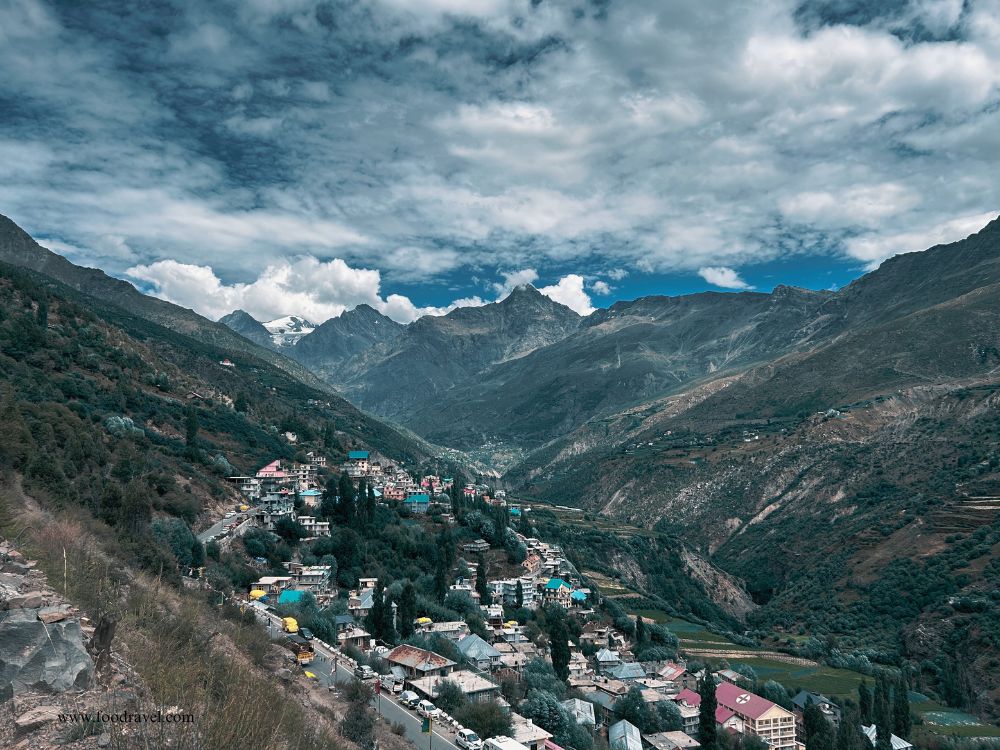
Shashur Monastery Guide: Exploring the Spiritual Heart of Keylong
Shashur Monastery is one of the most significant spiritual landmarks in Keylong, attracting visitors interested in Buddhist culture and history. This guide on Shashur Gompa explores the monastery’s origins, its unique architectural features, and the role it plays in the local community. The monastery sits against a breathtaking mountain backdrop, creating an atmosphere of peace and reflection. You’ll also find practical advice here, including the best seasons to visit, how to reach the monastery, and tips to respect local customs during your stay. With this information, your visit to Shashur Monastery will be both meaningful and smooth.
Highlights of Shashur Monastery: What to See and Experience – Shashur Monastery Guide
The Shashur Monastery Guide will help you uncover the serene atmosphere and stunning natural surroundings that make this monastery a must-visit destination in Keylong.
- Peaceful Prayer Hall: Experience the calm as monks perform daily rituals and chants.
- Scenic Location: Situated on a hill, the monastery offers panoramic views of the Lahaul Valley and surrounding blue pine forests.
- Ancient Scriptures: Discover a small collection of preserved religious texts and artifacts.
- Vibrant Prayer Flags: Colorful flags fluttering in the breeze symbolize prayers sent to the skies.
- Cultural Festivals: Attend seasonal events featuring traditional dances and local ceremonies.
- Meditation Paths: Quiet trails around the monastery provide space for reflection and spiritual connection.
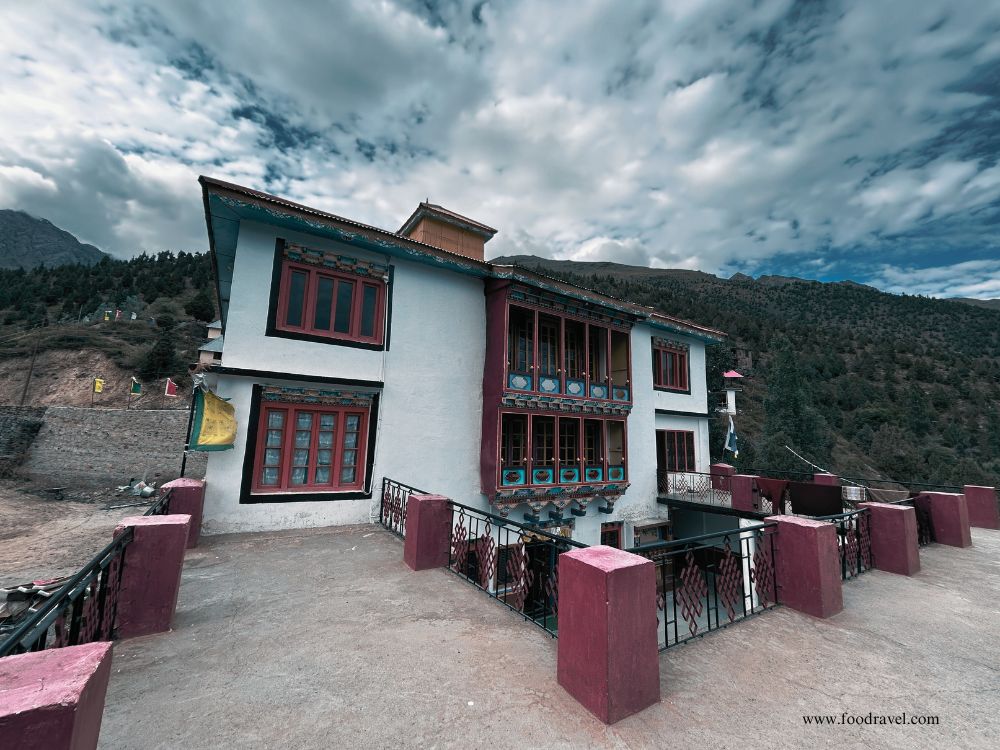
History of Shashur Monastery: Origins and Significance
Shashur Monastery was founded in the 17th century (at some places, the monastery is said to have been established in the 16th century) by Lama Deva Gyatsho, a missionary from Zanskar. He established the monastery under the patronage of Bhutan’s King Nawang Namgyal. The monastery follows the Drukpa Kagyu tradition of Tibetan Buddhism, which is known for its emphasis on meditation and monastic discipline. Its name, “Shashur,” means “blue pines,” inspired by the dense blue pine forests surrounding the site.
Over the centuries, Shashur Monastery has remained an important religious and cultural center in the Lahaul Valley, serving local communities and attracting pilgrims from nearby regions. The monastery’s location amidst serene natural beauty adds to its spiritual atmosphere. Today, it stands as a symbol of the rich Buddhist heritage of Himachal Pradesh and offers visitors a glimpse into centuries-old traditions.
Architecture of Shashur Monastery: Traditional Tibetan Design and Natural Harmony
Shashur Monastery showcases traditional Tibetan Buddhist architectural style that blends seamlessly with its natural surroundings. The monastery is built using locally sourced stone and wood, reflecting the resourcefulness of the region’s artisans. Its structure is simple yet sturdy, designed to withstand the harsh mountain climate. The walls are thick to provide insulation against cold winds, while the flat roofs are often used for drying prayer flags and other ritual items.
Inside, the monastery houses a main prayer hall adorned with minimal but meaningful decorations, emphasizing meditation and spiritual practice over lavish ornamentation. The vibrant red and ochre colors on the exterior walls are characteristic of Tibetan monasteries, symbolizing protection and sacredness. Shashur’s location amidst blue pine forests adds to the serene atmosphere, creating a harmonious balance between architecture and nature. This design not only supports religious functions but also invites visitors to experience tranquility and reflection.

The above image is taken from Google Books.
Shashur Monastery sits quietly on the Macchu slope, just about three kilometers from Keylong. The monastery’s chief abbot, or khenpo, is one of the most respected lamas in all of Lahaul.
Inside, the place is a treasure chest of Tibetan Buddhist art. You’ll find massive thangkas, some towering over four and a half meters, along with vivid wall paintings, including rare depictions of the 84 siddhas of Buddhism. The main prayer hall, or du-khang, houses delicate stucco images of deities, now kept behind glass to protect them. Even the walls, beams, and columns are alive with floral and symbolic motifs.
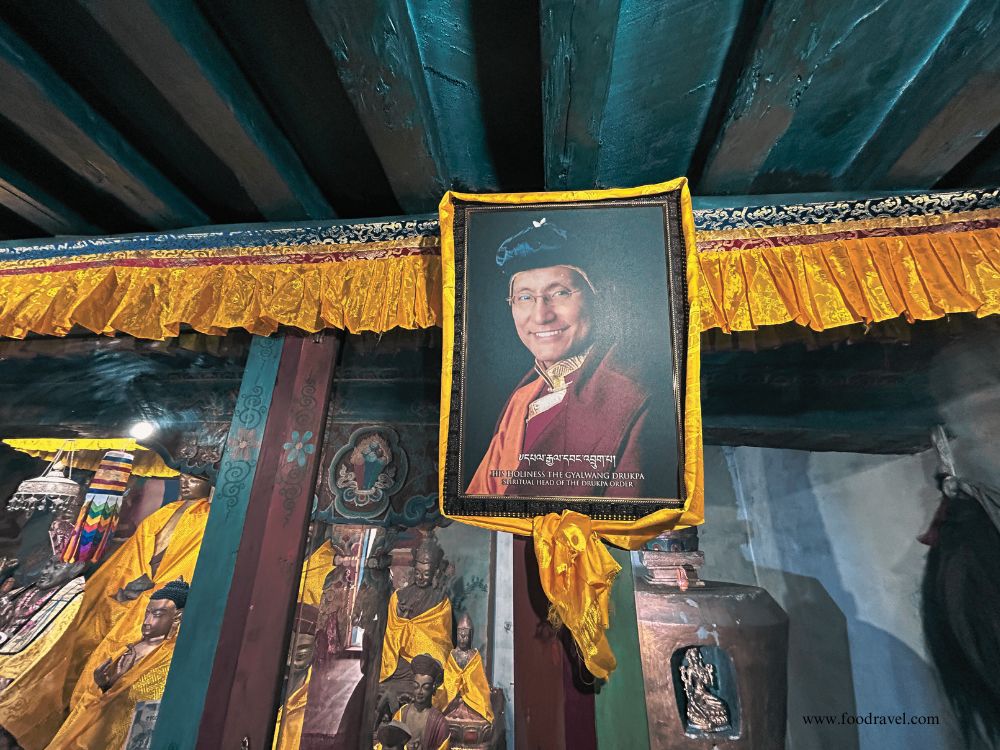
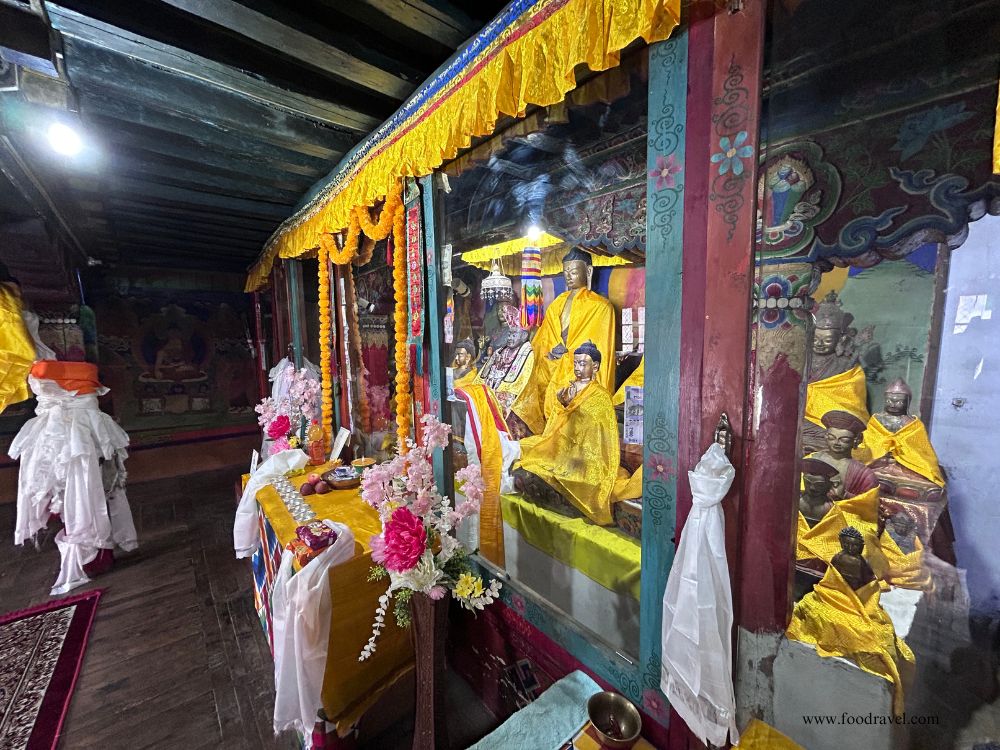
Shashur Monastery is a compact yet striking three-storey structure perched on an elevated terrace, facing southeast. From afar, its whitewashed mud-plastered walls catch the morning sun, while the colorful victory flags flutter in the wind, giving it a grand, almost palatial presence. Each floor has spacious terraces, making the most of the limited sunlight the narrow Lahaul Valley receives in winter, when the sun barely clears the high mountain peaks. The open terrace on the second floor faces southwest, designed by skilled lama-architects who made ingenious use of the small space available.
The ground floor features a large, open square portico, supported by six posts and open on three sides. From here, you step into the du-khang, a hall about 7.5 meters wide and 8.5 meters deep. Inside, narrow side aisles lead to the altar, with a wide central space for the monks. A circumambulatory passage encircles three sides of the hall, and behind it lie storerooms and the gon-khang, accessible through a separate eastern entrance.
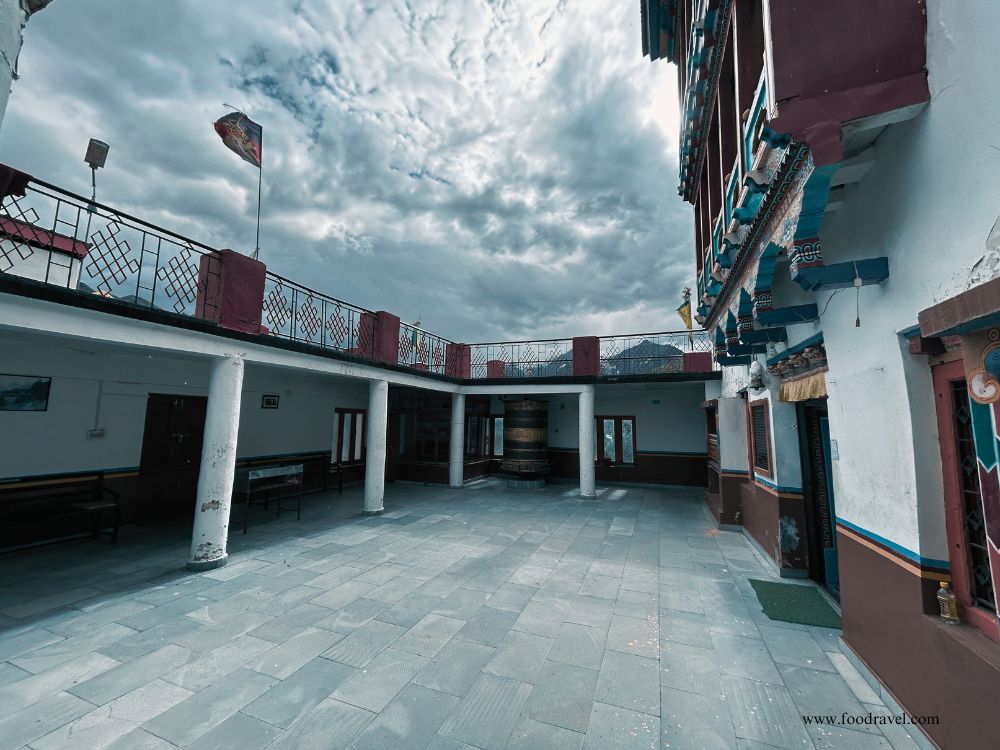
How to Reach Shashur Monastery: Travel Options and Routes
From Keylong
Shashur Monastery is about 3 km from Keylong town. You can hire a taxi or walk uphill for roughly 45 minutes along a moderately steep trail. The walk is scenic but requires some stamina.
From Manali
Take the Atal Tunnel and continue along the Manali–Leh Highway to reach Keylong. The journey takes 3–4 hours by car, taxi, or bus in summer. Once in Keylong, follow the local route to the monastery.
From Leh
Travel along the Leh–Manali Highway to Keylong. This route is open only from June to September when mountain passes are free of snow.
Best Travel Season
Access is easiest between late May and early October. Winter travel is difficult due to heavy snowfall and blocked roads.
Shashur Monastery Travel Guide: Best Time to Visit
Summer Season (Late May to Early October)
This is the most convenient time to visit. Roads are open, the weather is mild, and the blue pine forests surrounding the monastery are lush. June and July stand out as the liveliest months because of the annual festival with Cham dances and other cultural programs.
Festival Period
The Shashur Festival is a highlight of the year, attracting locals and visitors alike. Planning your trip during this time allows you to experience traditional Buddhist dances, music, and rituals.
Winter Season (November to April)
Heavy snowfall covers the Lahaul Valley, and road access to Keylong becomes difficult or even impossible. While the snowy landscape is striking, most travelers avoid this period due to extreme cold and blocked routes.
Shashur Monastery Guide: Travel Tips for First-Time Visitors
- Wear Comfortable Footwear: The trek from Keylong to Shashur Monastery gets steep and uneven, so sturdy boots are essential.
- Carry Water and Snacks: There are no shops close to the monastery (or on the way), so bring your own supplies.
- Dress in Layers: Weather in the mountains can change quickly, even in summer.
- Be Respectful: Photography inside prayer halls may be restricted. Always ask before taking pictures.
- Attend the Festival: If possible, visit in June or July to witness the traditional Cham dances (Tseshe festival).
- Pace Yourself at Higher Altitude: Keylong sits at over 3,000 meters. Most travelers adjust quickly, but if you’ve come from sea level in one day, take it easy before hiking to the monastery.
- Keep Cash Handy for Keylong: Digital payments are not always available in smaller local shops and taxis in Keylong.
If you come in June or July, you might catch the Tsehe festival. It is the biggest in Lahaul and features monks performing the mesmerizing chham dance in elaborate masks and traditional robes.
![]()


